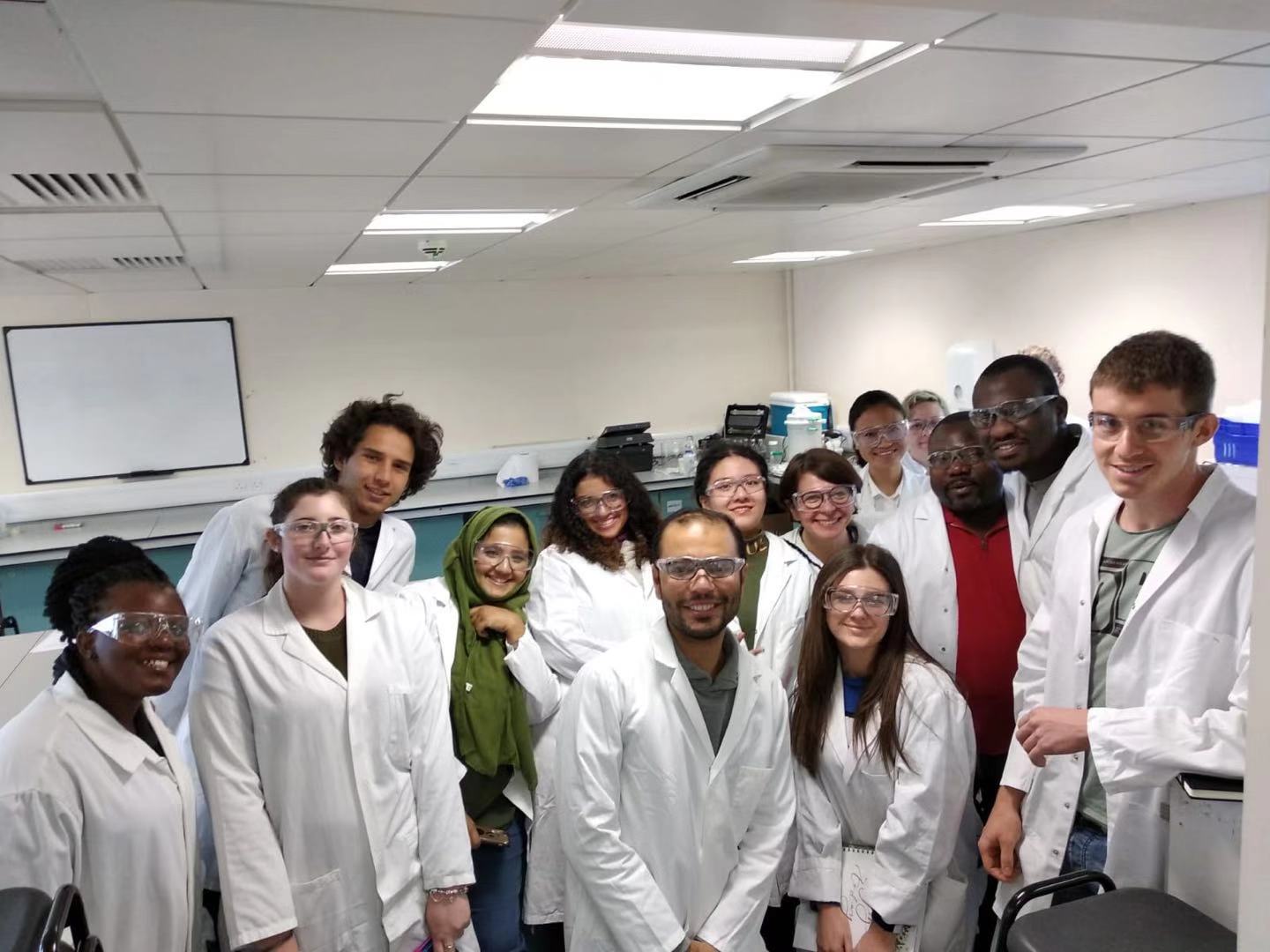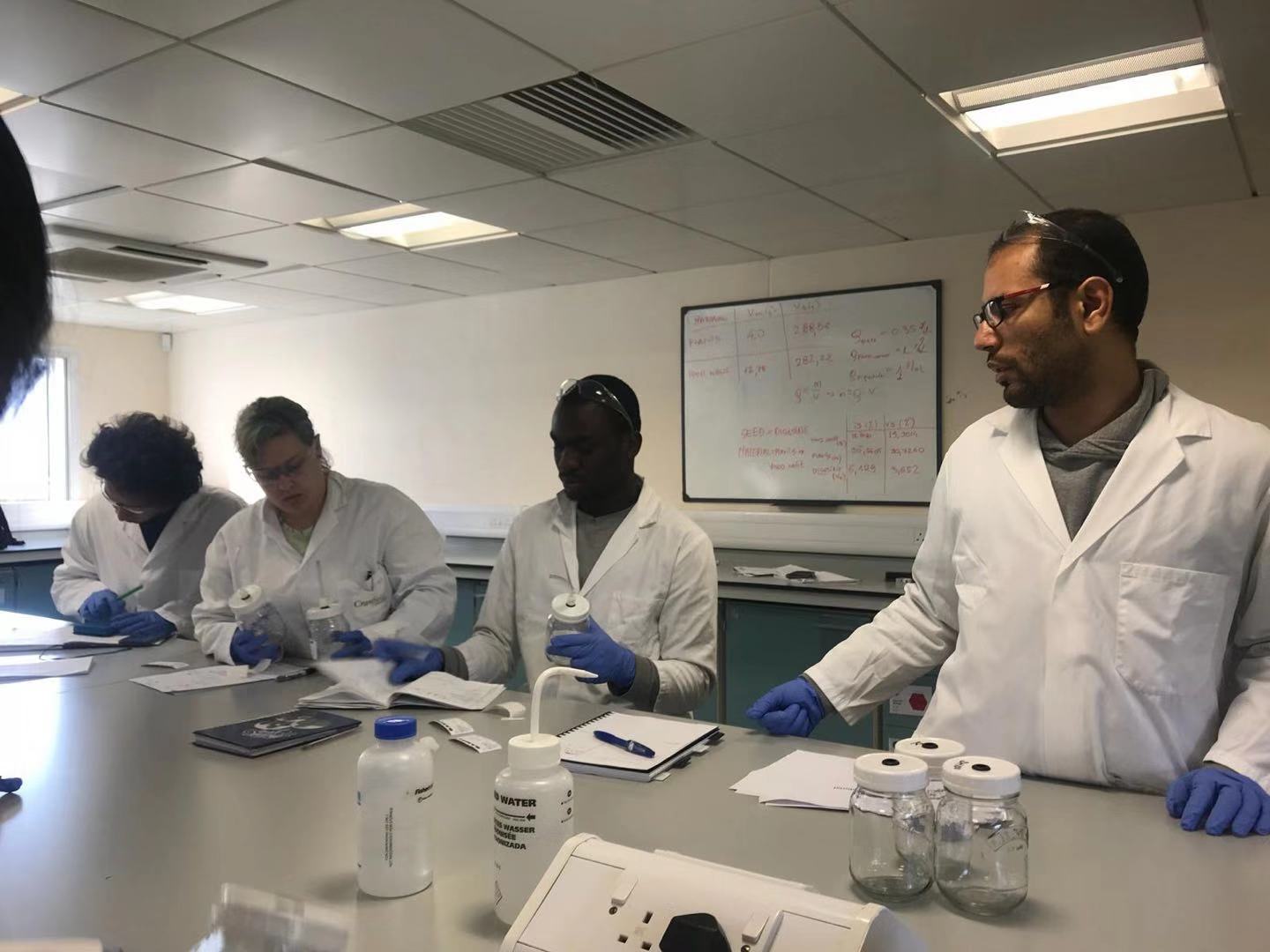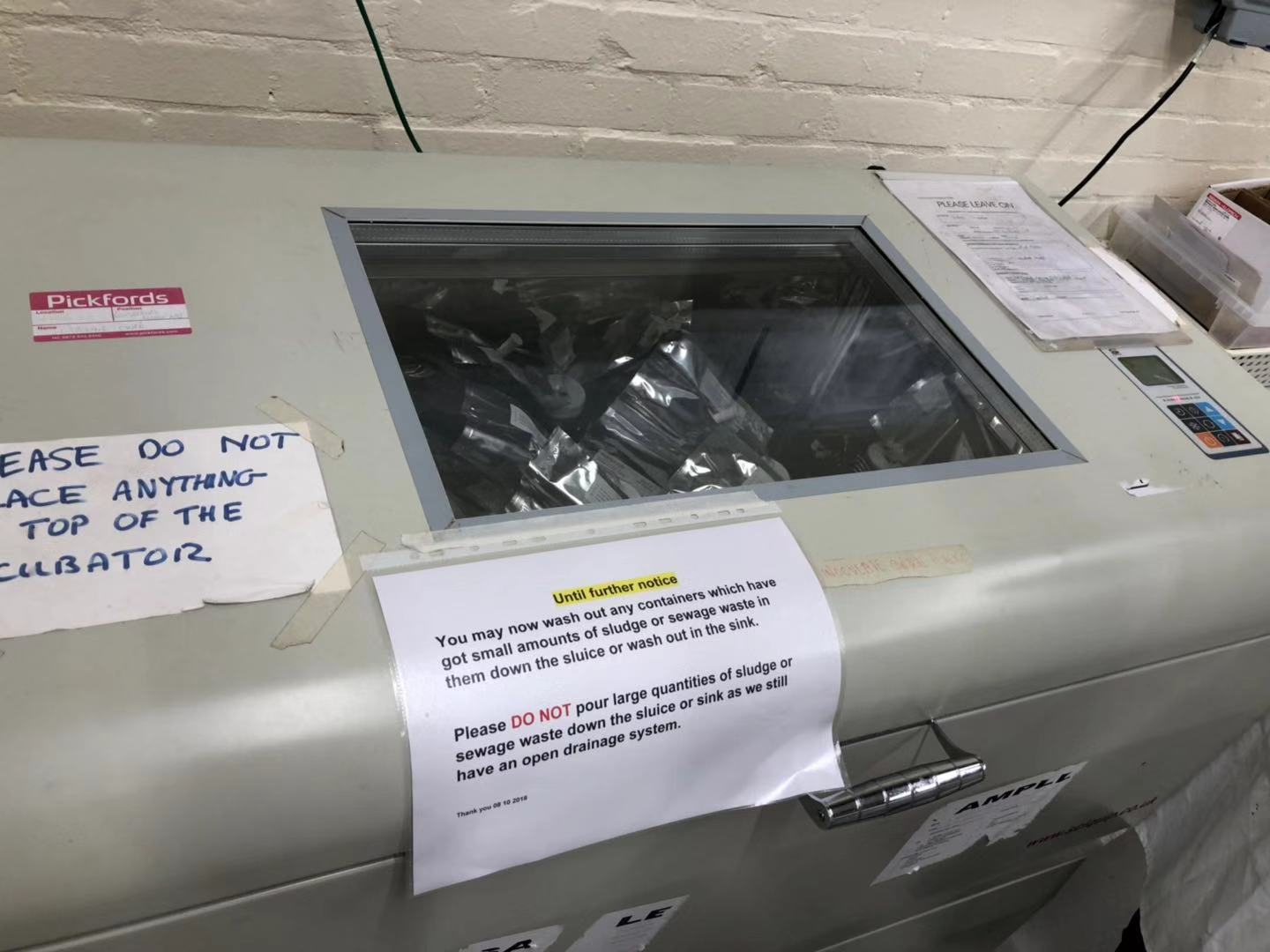The first week of circular waste management
29/11/2018

From 22 Oct, we started a new module, circular waste management: recycle, recover, and disposal, which is the second module in the Environmental Engineering MSc. This is a module which took four weeks. In the first part, in order to understand biorefinery better, the experiment to measure biogas from collected material impressed me a lot.
During my undergraduate course of environmental engineering in China, I experienced a lot in a lab, such as some experiments related to chemical analysis. However, I have never worn big goggles that can cover my glasses. This made me feel like a scientist!
The first part of the experiment is testing the total solids (TS) and volatile solids (VS) of the waste. We worked as two groups to weigh two different types of waste. The group I was in was in charge of plants. The material is a mixture of grass, leaves, and some other residues from plants. So it’s not like powder or liquid, it takes more room for the same weight. We weighed it carefully in order to get the most precise number.
Then we did a calculating exercise to find out the TS and VS of different materials and how much of the materials we needed for the next step. From this stage, we created a new group to calculate the ability to produce biogas by different materials. Using wet weight and dry weight, we got the TS and VS. Considering the ratio of seed and material, we knew we needed 17.80g material and because we are supposed to compare the difference between food waste with fat and without fat, the sample included food waste 15.80g and peanut butter 2.00g.

Calculating is not easy. Discussing with partners can improve accuracy.
The weighing process impressed me a lot. It was difficult to control the amount of material you added to the scale and this is the time to work as a team. Your team mates felt in the same way as you. When adding the material into the bottle, we all felt nervous together but we kept encouraging each other, saying “come on” or “wait, wait”. The atmosphere was really happy.
After weighing and preparing the bottles ready for the test, we went to the lab to see the facility collecting and testing the biogas.
There is something to remember in a lab. Firstly, safety is always most important. Wear lab coats, goggles, and gloves all the time and wash your hands before leaving. Secondly, keep the lab tidy. Many people work in the same lab, and you don’t know when and who will come and use the machine you have used. They don’t what you have done in the lab and if there is something toxic, so you need to clean up properly after yourself; so cleaning is not just for tidiness, but also for others safety.

Glass collected into bags in machine
Categories & Tags:
Leave a comment on this post:
You might also like…
How do I reference a blog post… in the NLM style?
Whilst blog posts do not fall into the scholarly material category, they can be useful for providing personal insights into a particular area. For example, there may be a high-profile member of an industry who ...
From nature walks to neural networks: My journey in Applied AI at Cranfield
Hi, I’m Ebru K and choosing a postgraduate degree is about more than just picking a subject; it’s about choosing where your future begins. As an international student from Turkey, I ...
Leading With Heart: My Journey as Cranfield Student Association President by Summer Yan
When I first arrived at Cranfield, I had no idea that one year later I would be standing at the heart of our student community, serving as President of the Cranfield Student Association (CSA). ...
Creating and using constituent lists in Datastream
Whether you're analysing industry performance, or comparing company financials, Datastream is a powerful tool. One of its most useful features is the ability to work with constituent lists — collections of companies grouped by index, ...
Landing at Cranfield: First-term experiences and life beyond the classroom
Starting a postgraduate course can feel daunting, especially if you’re new to the aviation industry. In this blog series, Adit Shah shares his journey on the Air Transport Management MSc at Cranfield. From first-term ...
Accelerating ambition: How Amelie Rohan engineered her future at Cranfield
In the world of high-performance automotive engineering, the gap between being a “fan” and being a professional is measured in more than just miles. It is measured in technical precision, hands-on ...






